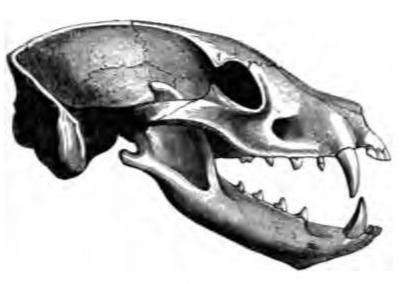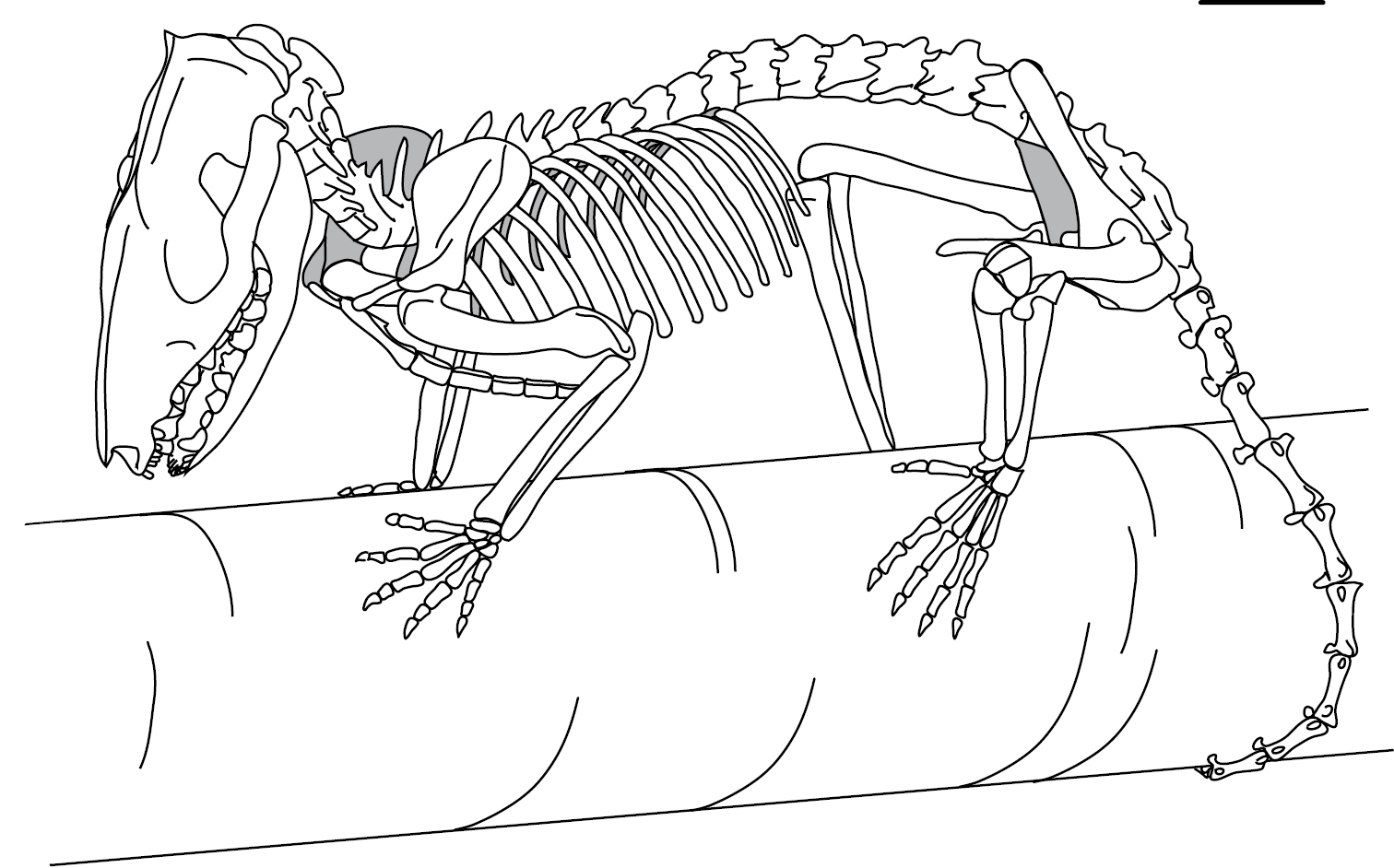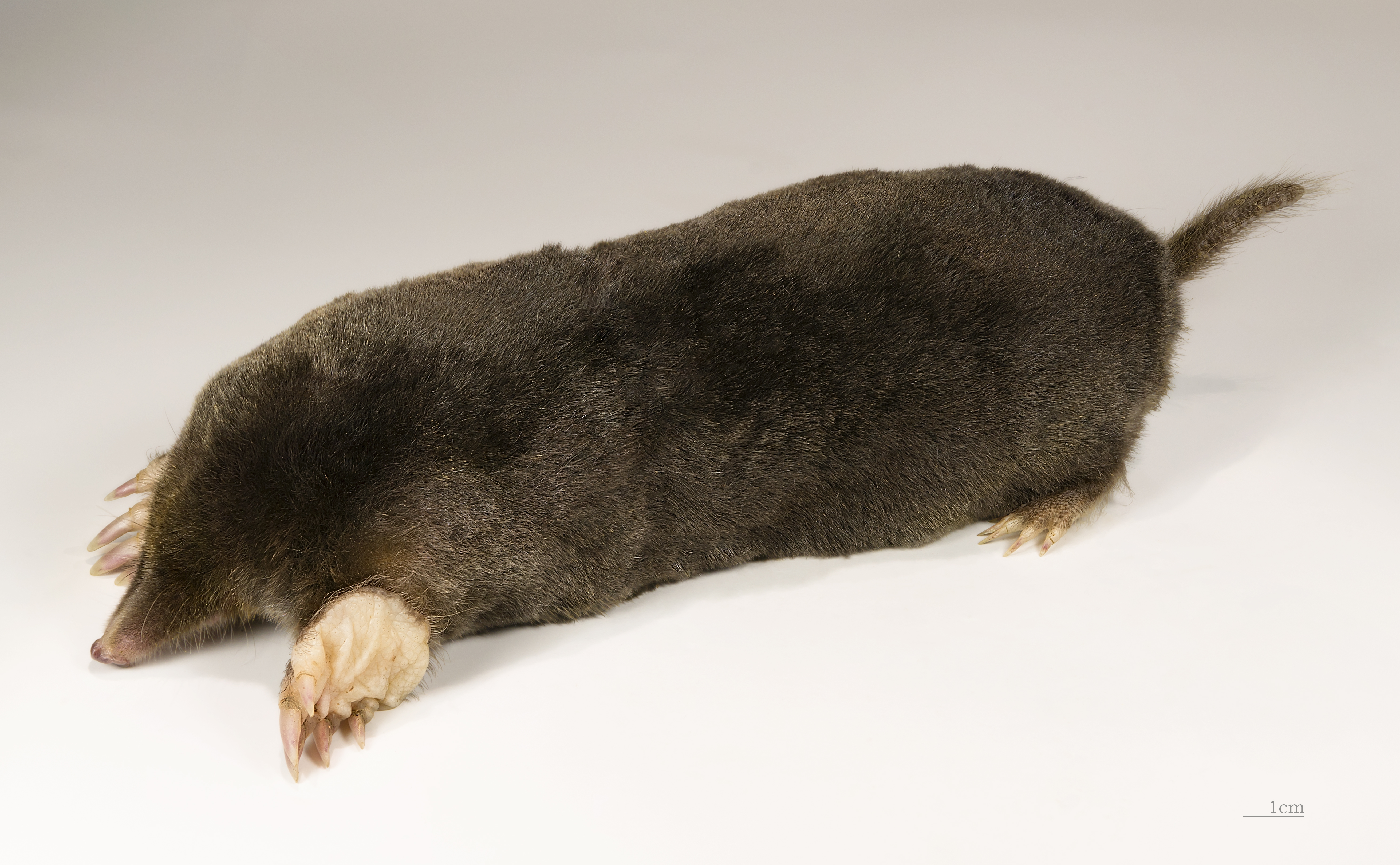|
Insectivory
A robber fly eating a hoverfly An insectivore is a carnivorous animal or plant which eats insects. An alternative term is entomophage, which can also refer to the human practice of eating insects. The first vertebrate insectivores were amphibians. When they evolved 400 million years ago, the first amphibians were piscivores, with numerous sharp conical teeth, much like a modern crocodile. The same tooth arrangement is however also suited for eating animals with exoskeletons, thus the ability to eat insects can stem from piscivory. At one time, insectivorous mammals were scientifically classified in an order called Insectivora. This order is now abandoned, as not all insectivorous mammals are closely related. Most of the Insectivora taxa have been reclassified; those that have not yet been reclassified and found to be truly related to each other remain in the order Eulipotyphla. Although individually small, insects exist in enormous numbers. Insects make up a ... [...More Info...] [...Related Items...] OR: [Wikipedia] [Google] [Baidu] |
Opossum
Opossums () are members of the marsupial order Didelphimorphia () endemic to the Americas. The largest order of marsupials in the Western Hemisphere, it comprises 126 species in 18 genera. Opossums originated in South America and entered North America in the Great American Interchange following the connection of North and South America in the late Cenozoic. The Virginia opossum is the only species found in the United States and Canada. It is often simply referred to as an opossum; in North America, it is commonly referred to as a possum (; sometimes rendered as ''possum'' in written form to indicate the dropped "o"). The Australasian arboreal marsupials of suborder Phalangeriformes are also called possums because of their resemblance to opossums, but they belong to a different order. The opossum is typically a nonaggressive animal and almost never carries the virus that causes rabies. Etymology The word ''opossum'' is derived from the Powhatan language and was first recorde ... [...More Info...] [...Related Items...] OR: [Wikipedia] [Google] [Baidu] |
Carnivore
A carnivore , or meat-eater (Latin, ''caro'', genitive ''carnis'', meaning meat or "flesh" and ''vorare'' meaning "to devour"), is an animal or plant Plants are the eukaryotes that form the Kingdom (biology), kingdom Plantae; they are predominantly Photosynthesis, photosynthetic. This means that they obtain their energy from sunlight, using chloroplasts derived from endosymbiosis with c ... whose nutrition and energy requirements are met by eating, consumption of animal tissue (biology), tissues (mainly muscle, adipose tissue, fat and other soft tissues) as food, whether through predation or scavenger, scavenging. Nomenclature Mammal order The technical term for mammals in the order (biology), order Carnivora is ''carnivoran'', and they are so-named because most member species in the group have a carnivorous diet, but the similarity of the name of the order and the name of the diet causes confusion. Many but not all carnivorans are meat eaters; a few, such as the fe ... [...More Info...] [...Related Items...] OR: [Wikipedia] [Google] [Baidu] |
Piscivores
A piscivore () is a carnivorous animal that primarily eats fish. Fish were the diet of early tetrapod evolution (via water-bound amphibians during the Devonian period); insectivory came next; then in time, the more terrestrially adapted reptiles and synapsids evolved herbivory A herbivore is an animal anatomically and physiologically evolved to feed on plants, especially upon vascular tissues such as foliage, fruits or seeds, as the main component of its diet. These more broadly also encompass animals that eat n .... Almost all predatory fish (most sharks, tuna, billfishes, Esox, pikes etc.) are obligated piscivores. Some non-piscine aquatic animals, such as whales, sea lions, and crocodilians, are not completely piscivorous; often also preying on invertebrates, marine mammals, waterbirds and even wading land animals in addition to fish, while others, such as the bulldog bat and gharial, are strictly dependent on fish for food. Some creatures, including cnidarians, o ... [...More Info...] [...Related Items...] OR: [Wikipedia] [Google] [Baidu] |
Eulipotyphla
Eulipotyphla (, from '' eu-'' + '' Lipotyphla'', meaning truly lacking blind gut; sometimes called true insectivores) is an order of mammals comprising the Erinaceidae ( hedgehogs and gymnures); Solenodontidae (solenodons); Talpidae ( moles, shrew-like moles and desmans); and Soricidae (true shrews) families. Taxonomic history Historically, these animals were grouped with others such as treeshrews, elephant shrews, and colugos, under the broader category Insectivora, comprising all small insect-eating placental mammals. Wilhelm Peters identified two sub-groups of Insectivora, distinguished by the presence or absence of a cecum in the large intestine. In his 1866 ''Generelle morphologie der organismen'', Ernst Haeckel named these groups Menotyphla and Lipotyphla, respectively from ''μένω'' ("remain")/''λείπω'' ("lack" or "leave behind") + ''τυφλὸν'' literally "blind", as in ''τυφλὸν ἔντερον'' ("blind intestine", from which the Latin '' ... [...More Info...] [...Related Items...] OR: [Wikipedia] [Google] [Baidu] |
Nightingale
The common nightingale, rufous nightingale or simply nightingale (''Luscinia megarhynchos''), is a small passerine bird which is best known for its powerful and beautiful song. It was formerly classed as a member of the thrush family Turdidae, but is now more generally considered to be an Old World flycatcher, Muscicapidae. It belongs to a group of more terrestrial species, often called chats. Etymology "Nightingale" is derived from "night" and the Old English ''galan'', "to sing". The genus name ''Luscinia'' is Latin for "nightingale" and ''megarhynchos'' is from Ancient Greek ''megas'', "great" and ''rhunkhos'' "bill". Subspecies *Western nightingale (''L. m. megarhynchos'') – western Europe, North Africa and Asia Minor, wintering in tropical Africa *Caucasian nightingale (''L. m. africana'') – the Caucasus and eastern Turkey to southwestern Iran and Iraq, wintering in East Africa *Eastern nightingale (''L. m. golzii'') – the Aral Sea to Mongolia, wintering in co ... [...More Info...] [...Related Items...] OR: [Wikipedia] [Google] [Baidu] |
Gecko
Geckos are small, mostly carnivorous lizards that have a wide distribution, found on every continent except Antarctica. Belonging to the infraorder Gekkota, geckos are found in warm climates. They range from . Geckos are unique among lizards for their vocalisations, which differ from species to species. Most geckos in the family Gekkonidae use chirping or clicking sounds in their social interactions. Tokay geckos (''Gekko gecko'') are known for their loud mating calls, and some other species are capable of making hissing noises when alarmed or threatened. They are the most species-rich group of lizards, with about 1,500 different species worldwide. All geckos, except species in the family Eublepharidae lack eyelids; instead, the outer surface of the eyeball has a transparent membrane, the brille. They have a fixed lens within each iris that enlarges in darkness to let in more light. Since they cannot blink, species without eyelids generally lick their own brilles whe ... [...More Info...] [...Related Items...] OR: [Wikipedia] [Google] [Baidu] |
Chameleon
Chameleons or chamaeleons (Family (biology), family Chamaeleonidae) are a distinctive and highly specialized clade of Old World lizards with 200 species described as of June 2015. The members of this Family (biology), family are best known for their distinct range of colours, being capable of colour-shifting camouflage. The large number of species in the family exhibit considerable variability in their capacity to change colour. For some, it is more of a shift of brightness (shades of brown); for others, a plethora of colour-combinations (reds, yellows, greens, blues) can be seen. Chameleons are also distinguished by their zygodactylous feet, their prehensility, prehensile tail, their laterally compressed bodies, their head casques, their projectile tongues used for catching prey, their swaying gait, and in some species crests or horns on their brow and snout. Chameleons' eyes are independently mobile, and because of this the chameleon’s brain is constantly analyzing two sepa ... [...More Info...] [...Related Items...] OR: [Wikipedia] [Google] [Baidu] |
Lizard
Lizard is the common name used for all Squamata, squamate reptiles other than snakes (and to a lesser extent amphisbaenians), encompassing over 7,000 species, ranging across all continents except Antarctica, as well as most Island#Oceanic islands, oceanic Archipelago, island chains. The grouping is Paraphyly, paraphyletic as some lizards are more closely related to snakes than they are to other lizards. Lizards range in size from chameleons and geckos a few centimeters long to the 3-meter-long Komodo dragon. Most lizards are quadrupedal, running with a strong side-to-side motion. Some lineages (known as "legless lizards") have secondarily lost their legs, and have long snake-like bodies. Some lizards, such as the forest-dwelling ''Draco (genus), Draco'', are able to glide. They are often Territory (animal), territorial, the males fighting off other males and signalling, often with bright colours, to attract mates and to intimidate rivals. Lizards are mainly carnivorous, often b ... [...More Info...] [...Related Items...] OR: [Wikipedia] [Google] [Baidu] |
Frog
A frog is any member of a diverse and largely semiaquatic group of short-bodied, tailless amphibian vertebrates composing the order (biology), order Anura (coming from the Ancient Greek , literally 'without tail'). Frog species with rough skin texture due to wart-like parotoid glands tend to be called toads, but the distinction between frogs and toads is informal and purely cosmetic, not from taxonomy (biology), taxonomy or evolutionary history. Frogs are widely distributed, ranging from the tropics to subarctic regions, but the greatest concentration of species diversity is in tropical rainforest and associated wetlands. They account for around 88% of extant amphibian species, and are one of the five most diverse vertebrate orders. The oldest fossil "proto-frog" ''Triadobatrachus'' is known from the Early Triassic of Madagascar (250Myr, million years ago), but molecular clock, molecular clock dating suggests their divergent evolution, divergence from other amphibians may exte ... [...More Info...] [...Related Items...] OR: [Wikipedia] [Google] [Baidu] |
Carp
The term carp (: carp) is a generic common name for numerous species of freshwater fish from the family (biology), family Cyprinidae, a very large clade of ray-finned fish mostly native to Eurasia. While carp are prized game fish, quarries and are valued (even pisciculture, commercially cultivated) as both food fish, food and ornamental fish in many parts of the Old World, they are considered trash fish and invasive species, invasive pest (organism), pests in many parts of Africa, Australia and most of the United States. Biology The cypriniformes (family Cyprinidae) are traditionally grouped with the Characiformes, Siluriformes, and Gymnotiformes to create the superorder Ostariophysi, since these groups share some common features. These features include being found predominantly in fresh water and possessing Weberian ossicles, an anatomical structure derived from the first five anterior-most vertebrae, and their corresponding ribs and neural crests. The third anterior-most pair ... [...More Info...] [...Related Items...] OR: [Wikipedia] [Google] [Baidu] |
Protein
Proteins are large biomolecules and macromolecules that comprise one or more long chains of amino acid residue (biochemistry), residues. Proteins perform a vast array of functions within organisms, including Enzyme catalysis, catalysing metabolic reactions, DNA replication, Cell signaling, responding to stimuli, providing Cytoskeleton, structure to cells and Fibrous protein, organisms, and Intracellular transport, transporting molecules from one location to another. Proteins differ from one another primarily in their sequence of amino acids, which is dictated by the Nucleic acid sequence, nucleotide sequence of their genes, and which usually results in protein folding into a specific Protein structure, 3D structure that determines its activity. A linear chain of amino acid residues is called a polypeptide. A protein contains at least one long polypeptide. Short polypeptides, containing less than 20–30 residues, are rarely considered to be proteins and are commonly called pep ... [...More Info...] [...Related Items...] OR: [Wikipedia] [Google] [Baidu] |










